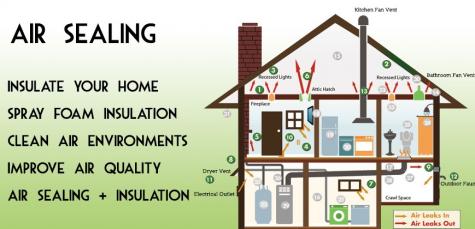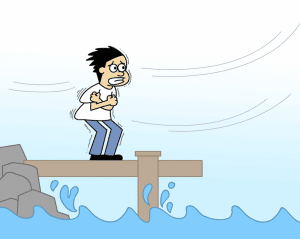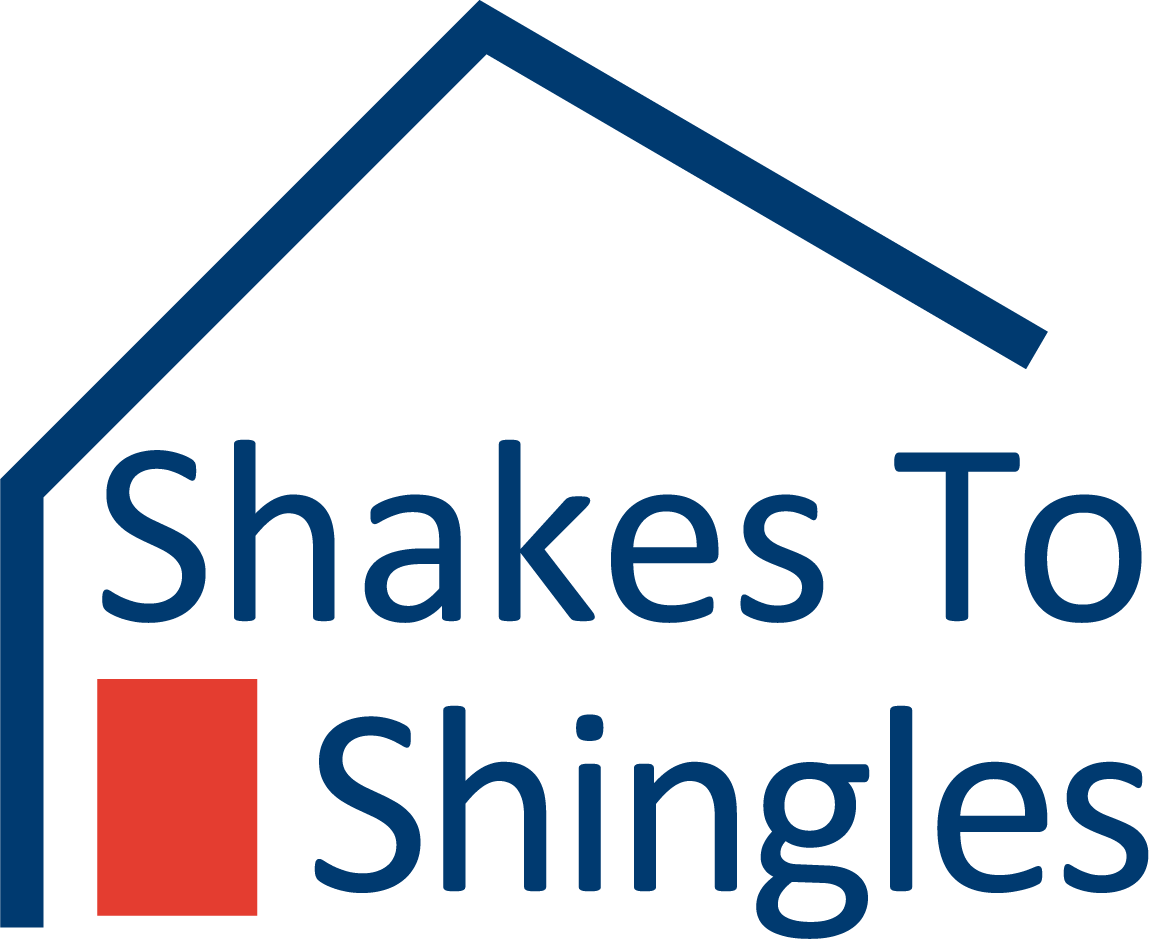A massive amount of energy is wasted due to cracks, holes, and gaps in your house. Air leakage occurs when outside air enters and conditioned air leaves your house uncontrollably through cracks and openings. Air leakage contributes to moisture problems that can affect occupants’ health and the structure’s durability. Reducing the amount of air that leaks in and out of your home, through air sealing cracks and openings, is a cost-effective way to cut heating and cooling costs, improve durability, increase comfort, and create a healthier indoor environment.

You may already know where some air leakage occurs in your home, such as an under-the-door draft, but you’ll need to find the less obvious gaps to properly air seal your home. During your home energy audit, we perform a thorough and accurate measurement of air leakage in your home by employing a blower door, which depressurizes the house and can reveal the location of many leaks.
Stack Effect
A house works a lot like a smoke stack. In winter, hot air rises through the house until it exits in the attic. In summer, it reverses causing heat from the attic to push into your home. If the second floor of your home is hotter than the first in the summer, this is a big part of why. There should be no more than a 2-3 degree difference between floors. If you seal off a smoke stack at the top, the bottom, or both, you don’t have a smoke stack. In air sealing a house we are trying to stop the stack effect as much as we can.

Wind Breaker on a Pier Principle
Think about standing on a pier in a stiff winter wind wearing nothing but a t-shirt and jeans. You’re teeth are chattering from the cold. You get the option of either a wind breaker or a loose knit sweater. Which one do you want? The wind breaker, of course. It at least stops the wind, where wind blows right through a sweater. Ideally you want both, a wind breaker (air sealing) over a sweater (insulation). That is what you want with your home, wrapping an air seal around your insulation.
Analogy courtesy of Energy Smart Home Performance
What can I do?
Tighten up your home with air sealing — the systematic finding and sealing of air leakage points throughout your home, from the attic to the walls to the basement and/or crawlspace.
Attics: lights, fans, plumbing stacks, chimneys, etc – any hole in the ceiling is called a thermal bypass, or air leak. We spray foam around most of these, including around light fixtures, bathroom fans, open wall cavities, and plumbing stacks.
Walls: insulation and/or outlet sealing – the simplest item on walls is to put foam backers behind the outlet covers and child proof plugs to stop air coming out the outlet holes.
Basements/Crawlspaces: there is a lot of leakage in the basement, and since it is accessible in most homes, it is a priority for any home performance contractor.
Additional areas to seal:
- Caulk and weatherstrip doors and windows that leak air
- Cover single-pane windows with storm windows or replace them with more efficient double-pane low-emissivity windows
- Use foam sealant on larger gaps around windows, baseboards, and other places where air may leak out
- Cover your kitchen exhaust fan to stop air leaks when not in use
- Check your dryer vent to be sure it is not blocked; saving energy and may prevent a fire
- Replace door bottoms and thresholds with ones that have pliable sealing gaskets
- Repair damaged siding or roofing, and seal small gaps
- Keep the fireplace flue damper tightly closed when not in use
Is air sealing necessary?
Air sealing a house increases your comfort by reducing the drafts in a house. It also reduces the cycle time that your heating and cooling systems run. A drafty house is more than just a waste of natural resources — it also means higher energy bills. Lower energy bills automatically by air sealing due to the fact that there should be less leaks in and out of the house.
Air sealing is crucial for maximizing the performance of insulation, the other major component of the home’s building envelope. The R-Value of insulation is determined under the assumption that there will be no air infiltration throughout the insulation — it assumes that there will be adequate air sealing around the insulation. Once insulation is left exposed to air movement (air moving up through your attic floor, for example), R-Value decreases. By employing some serious air sealing work, you should expect to start seeing energy savings almost immediately.
Save Energy and Money
Air that leaks through your home’s envelope − the outer walls, windows, doors, and other openings − wastes a lot of energy and increases your utility costs. A well-sealed envelope, coupled with the right amount of insulation, can make a real difference on your utility bills.
Increase Comfort
Sealing leaks and adding insulation can improve the overall comfort of your home and help to fix many of these common problems:
- Reduced noise from outside
- Less pollen, dust and insects (or pests) entering your home
- Better humidity control
- Lower chance for ice dams on the roof/eves in snowy climates
Sealing air leaks from the attic and crawl space reduces the quantity of air leakage while improving the quality of air inside in most cases. And by far, the most logical and convenient time to perform air draft sealing is at the same time that new insulation is installed. The new insulation won’t work like it’s supposed to without doing the air draft sealing. Installing insulation without taking steps to reduce unwanted air infiltration is similar to painting a car without addressing rust spots – it saves a little money in the short term, but the result is disappointing from day one.
A tight home is an efficient home.
Improve your home efficiency today
When it comes to air sealing, Shakes To Shingles knows best. We’re ready to assist you in making your home tighter, and more comfortable!
Call us at 603-415-1115 today.




